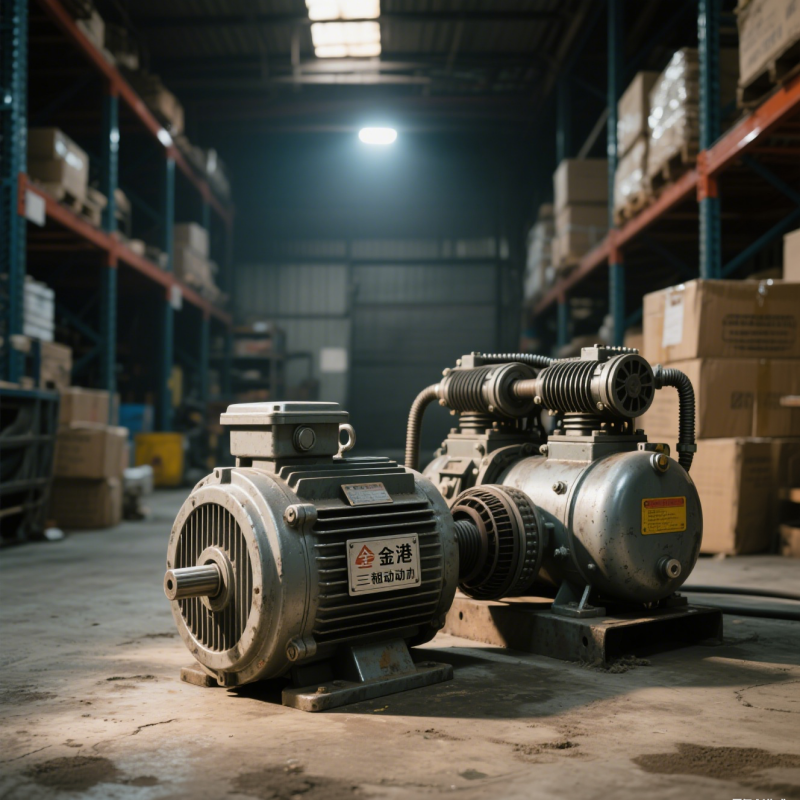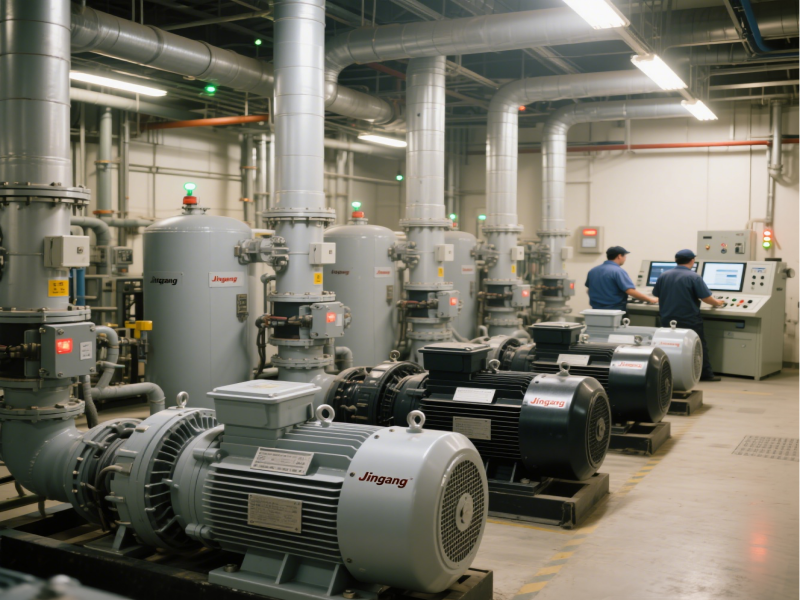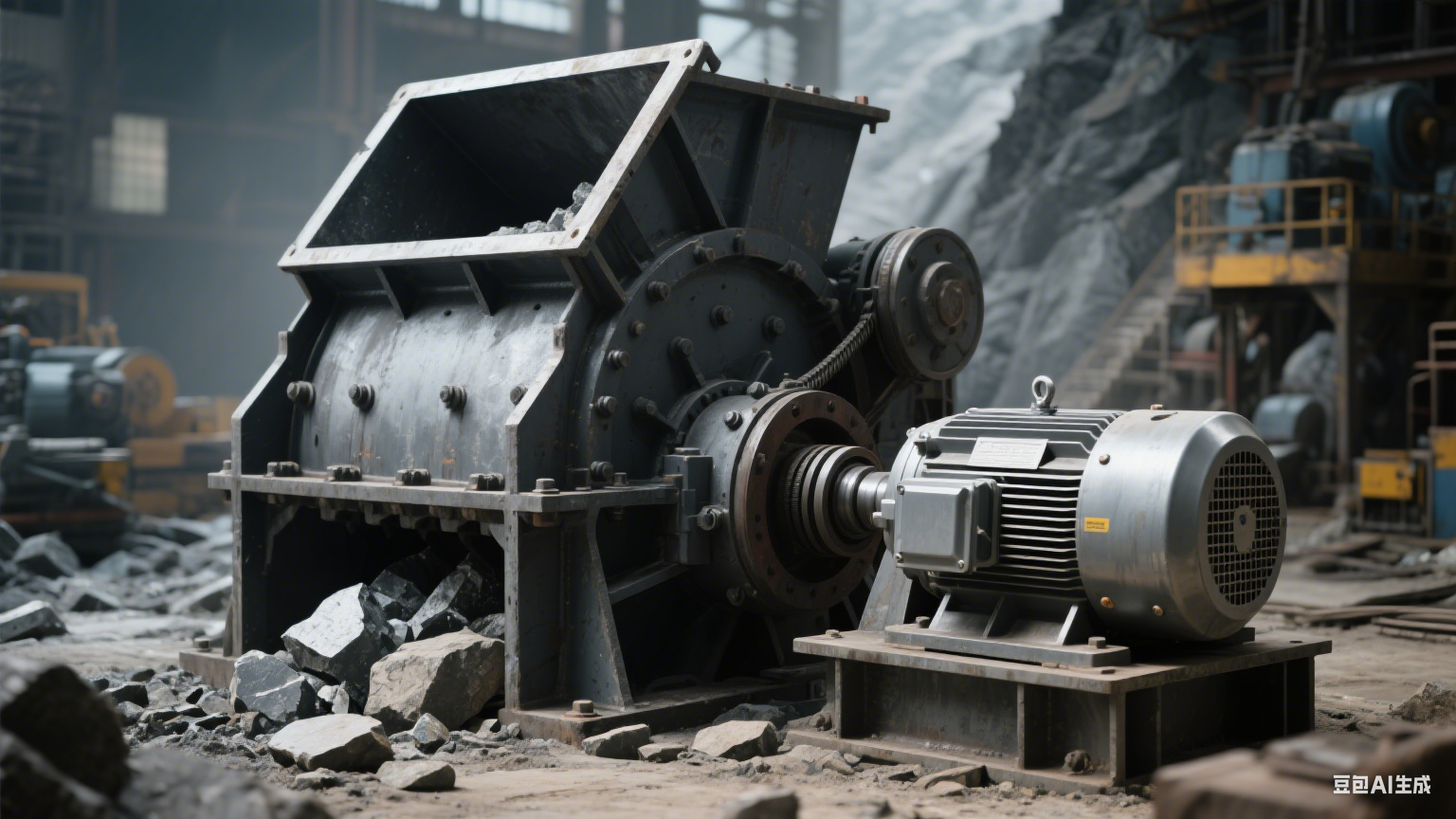Application of three-phase asynchronous motor in air compressor
The three-phase asynchronous motor is one of the most widely used drive motors in air compressors. Its structural characteristics and performance advantages are highly matched with the working requirements of air compressors. The following is a detailed introduction from the aspects of application advantages, adaptation principles, specific scenarios and optimization methods:
The core advantages of three-phase asynchronous motors in air compressors
The core requirements of air compressors (referred to as “air compressors”) are continuous and stable power output, adaptability to load fluctuations, high efficiency and energy saving, and convenient maintenance. Three-phase asynchronous motors can meet these requirements. The specific advantages are as follows:
Wide power coverage: The power of three-phase asynchronous motors can range from several kilowatts to hundreds of kilowatts, which can match various specifications of air compressors (such as small piston air compressors and large screw air compressors).
High operating efficiency: The efficiency can reach 70%-95% under rated load (high-power models are better), which is much higher than general motors, reducing the energy consumption cost of long-term operation of air compressors.
Strong and durable structure: There are no vulnerable parts such as brushes and commutators, and it has strong vibration and dust resistance, which is suitable for long-term continuous operation of air compressors in industrial environments (such as factory workshops and construction sites).
Torque characteristic adaptation: The air compressor is a constant torque load (stable torque output is required when compressing air). The three-phase asynchronous motor has stable torque during operation, and the starting torque can be increased through the wound rotor or starting device to meet the instantaneous load requirements when the air compressor starts.
Flexible speed regulation: With the inverter, smooth speed regulation can be achieved to meet the energy-saving requirements of the air compressor “on-demand air supply” (such as automatically adjusting the speed according to the air pressure to avoid wasting energy when running without load).
Adaptation principle with air compressor
The working process of air compressor is to compress and store air through the motor-driven compression mechanism (piston, screw, impeller, etc.). The driving logic of three-phase asynchronous motor is highly consistent with this process:
Power transmission: The motor output shaft is connected to the air compressor compression mechanism through a coupling or belt, and the rotational mechanical energy is transmitted to the compression component to achieve air compression.
Load adaptation: When the pressure of the air storage tank increases, the load of the air compressor increases, and the speed of the three-phase asynchronous motor only decreases slightly (the slip rate is usually < 5%), and it can still output torque stably to ensure the continuous compression process.
Starting control: The load of the air compressor is large when starting (especially the piston air compressor, there is a “dead point” resistance). By reducing the voltage to start (such as star-delta starting, autotransformer starting) or winding motor series resistance starting, the starting current can be reduced (to avoid impact on the power grid) and the starting torque can be increased to ensure smooth starting.

Specific applications in different types of air compressors
Piston air compressor
Features: simple structure, low cost, suitable for small and medium displacement (such as small factories, auto repair shops), but with large vibration and noise during operation.
Motor matching: squirrel cage three-phase asynchronous motors (power 1.5kW-55kW) are mostly used. Because the piston air compressor load has periodic pulsation, the motor needs to have a certain overload capacity. Usually, a “high slip rate” model (slip rate 5%-10%) is selected to buffer load fluctuations.
Screw air compressor
Features: high efficiency, continuous gas production, widely used in large-scale industrial gas supply (such as chemical industry, manufacturing industry), large displacement, stable operation.
Motor matching: mainly high-power squirrel cage or winding three-phase asynchronous motor (power above 15kW). Among them, large screw machines often use the “variable frequency motor + inverter” combination, which controls the gas production by adjusting the motor speed to achieve “constant pressure gas supply”, and the energy saving effect is 20%-30% higher than that of traditional fixed speed motors.
Centrifugal air compressor
Features: Suitable for ultra-large displacement scenarios (such as power plants and steel plants), relying on high-speed rotating impellers to compress air, and requiring extremely high motor speed stability.
Motor matching: Using high-speed three-phase asynchronous motors (or in conjunction with speed-increasing gearboxes), through precise dynamic balancing design and variable frequency speed regulation, ensure that the impeller runs stably at a high speed of thousands of revolutions per minute, avoiding the impact of speed fluctuations on compression efficiency.
Optimization and precautions in application
Energy-saving transformation: Traditional fixed-speed air compressors are often in a state of “full load operation + exhaust pressure relief” and have high energy consumption. By transforming the three-phase asynchronous motor into a “variable frequency drive”, the speed can be automatically adjusted according to the pressure of the gas tank (acceleration when the pressure is low, deceleration when the pressure is high), significantly reducing no-load energy consumption.
Protection level selection: There may be dust and water vapor in the working environment of the air compressor. The motor must meet the corresponding protection level (such as IP54, IP55) to avoid internal dust or moisture causing failure.
Heat dissipation design: The air compressor itself generates heat during operation. The motor needs to be away from the heat source or add a cooling fan to prevent insulation aging due to overheating.
Maintenance points: Regularly check the motor bearing lubrication and stator winding insulation resistance to avoid loosening of the motor anchor bolts due to air compressor vibration, affecting coaxiality and operation stability.
Summary
Three-phase asynchronous motors have become the “standard” drive solution for air compressors due to their high reliability, high efficiency, and wide power range. They can be stably adapted to the air supply equipment of small pneumatic tools and the air supply system of large industrial production lines. With the increasing requirements for energy saving, the combination of “three-phase asynchronous motor + inverter” has become the mainstream configuration of air compressors, which not only ensures the stability of air supply, but also greatly reduces operating costs.




